Last Updated on June 29, 2023
Explore 65 fascinating and fun sunflower facts to uncover the secrets behind these stunning flowers.
Did you know that sunflowers can grow up to 10-14 feet tall, with the tallest one ever recorded reaching 30 feet?
Are you aware that sunflower plants have the ability to remove heavy metals from water and soil?
Have you ever heard that sunflowers were grown in space?
Have you ever wondered why a sunflower is called a sunflower? Is it because it resembles the sun or because its head follows the sun?
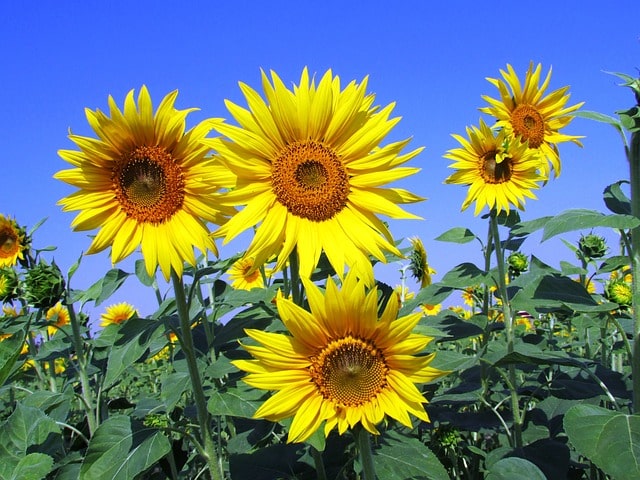
Get ready to be amazed by 65 fascinating and fun facts about sunflowers! You will discover intriguing information about what makes sunflowers truly extraordinary. From scientific and historical tidbits and trivia to sunflower symbolism and incredible benefits, let’s explore together what is special about sunflowers.
Whether you are a gardener, a nature lover, or simply a curious adult or kid, this article will leave you with a deep admiration for the radiant charm of sunflowers.
*This post may contain affiliate links. If you choose to purchase any of the products I have recommended, I may receive a commission at no cost to you.
Scientific Facts About Sunflowers
1. The sunflower is called “sunflower” because of its characteristic behavior of tracking the movement of the sun throughout the day. The flower head of the sunflower follows the sun’s path from east to west, facing eastward in the morning and gradually turning westward as the day progresses. This phenomenon is known as heliotropism. The name “sunflower” captures this unique characteristic and has become the common name for this plant.
2. The sunflower belongs to the genus Helianthus, which is derived from the Greek words “helios” meaning “sun” and “anthos” meaning “flower.” This further emphasizes the connection between the sunflower and its association with the sun.
3. As sunflowers grow older, they tend to stay facing east to get the most sunlight possible. So while young sunflowers can track the sun, older ones decide it’s best to keep their faces fixed towards the east for maximum sun exposure. It’s like they know the sun’s secrets!
4. The sunflower is more than just a single flower. When you look at a sunflower head, you’re actually observing a collection of numerous individual flowers. This unique formation is known as an inflorescence, specifically a composite flower.
5. The outer perimeter of the sunflower head consists of large, colorful petals known as ray florets. The central part of the flower, called the disc, is composed of hundreds or even thousands of tiny individual flowers known as disk florets. These florets collectively create the iconic “face” of the sunflower.
6. The central florets of the sunflower are hermaphroditic, meaning they have both male and female parts for reproduction. That means they can self-pollinate if they need to. But cross-pollination by bees, butterflies, and other pollinators is more common since these central florets are filled with sweet insect-attracting nectar.
7. Sunflowers have a secret defense system. If you take a closer look, you’ll spot tiny brush-like structures called trichomes on sunflower’s stems, leaves, and bracts (leaf-like structures below the flower head). These fine hairs serve as defense mechanisms, keeping pests at bay and helping to reduce water loss.
8. Sunflower seeds are developed from the disc florets situated at the center of the sunflower head. After these florets get pollinated, the ovary inside them undergoes fertilization and transforms into a seed. As the sunflower head ripens, those disc florets dry up, and the seeds inside them become fully grown and ready.
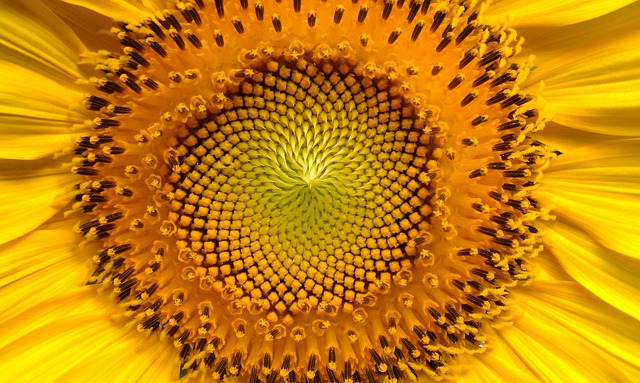
9. The arrangements of the florets in the sunflower head often follow a mathematical pattern known as Fibonacci numbers. The number of spirals in one direction is typically a Fibonacci number, and the number of spirals in the opposite direction is usually a consecutive Fibonacci number.
10. Below the surface, sunflowers have a robust and extensive root system. Their taproots can reach several feet deep, helping the plant anchor securely in the ground and absorb water and nutrients from the soil.
11. Sunflowers have been grown in space as part of scientific experiments. In 2012, sunflower seeds were sent to the International Space Station (ISS) as part of the educational initiative known as the “Tomatosphere” project. The purpose of this project was to study the effects of microgravity on plant growth and development.
12. Sunflowers have been used in phytoremediation projects to clean up contaminated soil. They are capable of absorbing heavy metals and toxins from the soil.
13. Sunflowers are capable of cleaning up radioactive water. For example, Phytotech, a company in New Jersey that specializes in using plants to clean up pollution, was using sunflowers to clean up radioactive water from Chernobyl. They placed the sunflowers on floating rafts in the water, so the roots of the sunflowers absorb harmful cesium 137 and strontium 90. Once the sunflowers had absorbed these substances, they were safely disposed of as radioactive waste.
14. In 2015, a sunflower grown in Germany broke the Guinness World Record for the tallest sunflower, measuring a towering height of 30 feet and 1 inch (9.17 meters).
Read related: 85 Fun Facts about Roses
Sunflower Facts for Gardeners
15. Sunflowers are easy to grow. If you’re looking for a low-maintenance and visually appealing plant to grow in your garden, sunflowers are an excellent choice.
16. Sunflowers attract pollinators like bees, hummingbirds and butterflies, which can help with the overall health and diversity of your garden.
17. Sunflowers are known for their tolerance to drought conditions. Their deep taproots allow them to access water from lower soil layers, making them resilient in dry climates.
18. Sunflowers come in various types and sizes, ranging from dwarf varieties that grow to only 1-2 feet tall, to towering giants that can reach heights of 10-15 feet or even more.
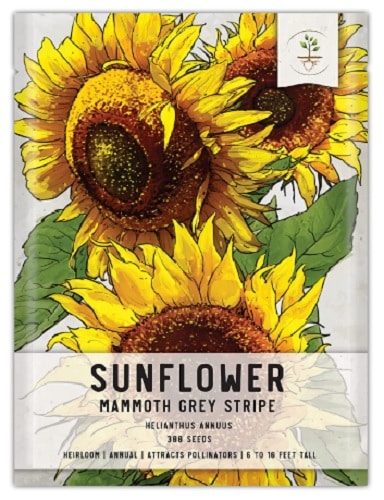
19. Sunflower varieties differ in the size of their flower heads, with some having small heads as small as 2-4 inches in diameter, while others boast giant heads measuring over 12 inches across.
20. Sunflowers exhibit an array of petal colors beyond the classic yellow, including shades of orange, red, maroon, and even bi-colored petals with contrasting hues.
21. While most sunflowers have round or oval-shaped petals, some varieties have unique petal shapes, such as spoon-shaped, elongated, or twisted petals.Some sunflower varieties feature double or semi-double petals, which give the flower a fuller, more voluminous appearance.
22. All sunflower seeds are technically edible, but there are specific varieties cultivated for their large, plump seeds, which are commonly used for snacking and cooking.
23. Sunflower seeds are not limited to the typical black and white striped varieties. Some varieties produce seeds in a range of colors, including solid black, white, striped with different colors, or even speckled patterns.
24. Apart from the typical seed-producing sunflowers, there are ornamental sunflower varieties bred specifically for their striking appearance, with unique colors, patterns, and shapes that make them popular in gardens and floral arrangements.
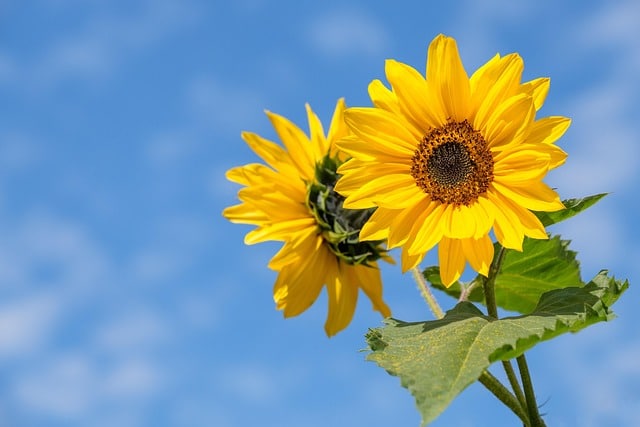
25. Multi-branching sunflowers have multiple stems branching out from the main stalk, resulting in an abundance of blooms. They can produce numerous smaller flower heads, creating a fuller and bushier appearance.
26. There are sunflower varieties bred specifically to be pollen-free, making them ideal for those with pollen allergies or for cut flower arrangements where pollen can stain surfaces.
Read related: 70 Fun Facts about Flowers
Historical and Cultural Facts about Sunflower
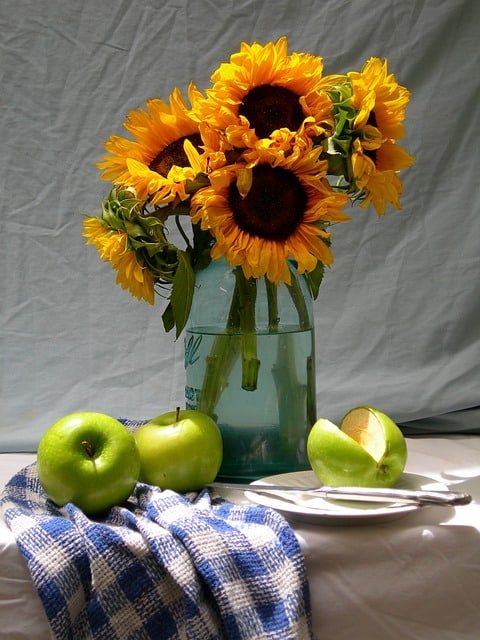
27. Evidence suggests that sunflowers were cultivated as early as 3,000 BCE in North America by Native American tribes, including the Aztecs and Incas, who used them for food, oil, and medicinal purposes.
28. Native American tribes, such as the Hopi and Zuni, revered sunflowers as symbols of fertility, harvest, and sun deities. They incorporated sunflowers into their rituals, ceremonies, and daily life.
29. Sunflowers were introduced to Europe by Spanish explorers in the late 16th century, who brought sunflower seeds back from the Americas.
30. The famous Dutch painter Vincent van Gogh created a series of still-life paintings known as “Sunflowers.” These vibrant and iconic artworks depict sunflowers in various stages of bloom and are highly celebrated today.
31. Ukraine adopted the sunflower as its national flower due to its historical and cultural significance. Ukraine is one of the world’s largest producers of sunflower seeds and sunflower oil.
32. Kansas, a state in the United States, is often referred to as the “Sunflower State.” This nickname originated from the abundance of wild sunflowers that once blanketed the prairies of Kansas.
33. Sunflowers are grown and appreciated around the world, with major producers including Ukraine, Russia, Argentina, and the United States. They continue to captivate people with their beauty, versatility, and historical significance
34. There are several sunflower festivals celebrated around the world. The most notable sunflower festivals are: Tuscany Sunflower Festival (Italy), Sunflower Festival at Davis Family Farms (California, USA) , Nogi Sunflower Festival (Japan), Rhone Valley Sunflower Festival (France). These festivals often showcase the beauty of sunflowers and offer various activities and attractions for visitors.
Sunflower Products and Uses (Culinary, Practical, and Industrial Applications)
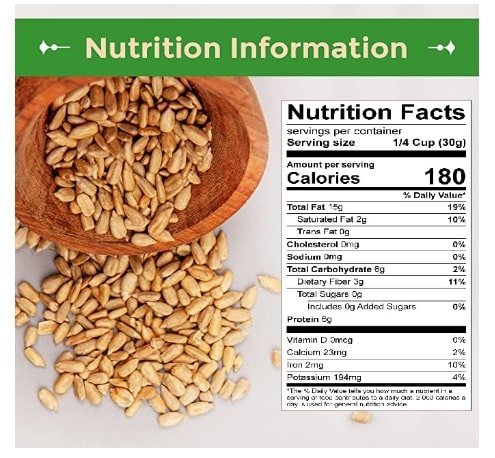
36. Sunflower seeds are a versatile ingredient in culinary applications. They can be used in both sweet and savory dishes, adding a unique texture and nutty flavor. Sunflower seeds can be roasted and seasoned with various spices to create a flavorful and healthy snack.
37. Sunflower seeds have various health benefits. They are rich in nutrients like healthy fats, protein, fiber, and essential minerals. Sunflower seeds are a good source of vitamin E, which acts as an antioxidant in the body.
38. Sunflower seed butter is a popular alternative to nut butter for those with allergies or dietary restrictions. It can be used as a spread, in baking, or as a base for sauces and dressings.
39. The oil extracted from sunflower seeds is widely used in cooking. Sunflower oil is known for its light flavor and high smoke point, making it suitable for frying, sautéing, baking and other high-temperature cooking methods. It’s also often used as a base for salad dressings and marinades.
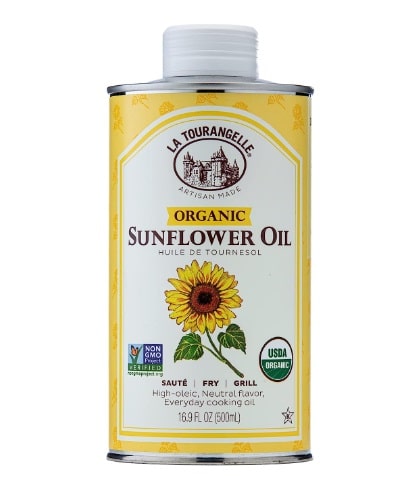
40. Sunflower oil is also used in the cosmetic industry due to its moisturizing and emollient properties. It is often found in skincare products like lotions, creams, and lip balms, helping to nourish and hydrate the skin.
41. Sunflower oil has also been used in traditional medicine for its potential anti-inflammatory properties.
42. Sunflower petals are edible and can be used as a decorative element or ingredient in salads, soups, and desserts. Sunflower petals can be infused into oils, vinegars, or syrups, adding a delicate floral essence to culinary creations.
43. Sunflower petals have found their place in the herbal tea market. Dried sunflower petals are often used to create aromatic and visually appealing floral teas, offering a pleasant and soothing beverage option.
44. Sunflower petals can be used to create dye for fabric or other materials. The dye obtained from sunflower petals typically produces vibrant yellow to golden hues.
45. Sunflower sprouts are nutritious and often used in salads, sandwiches, and as a garnish. They are crunchy and have a mild nutty flavor. Sunflower sprouts are typically grown by soaking sunflower seeds in water for 8-12 hours, until they begin to sprout. These sprouts are then consumed, usually within a day or two, before they develop true leaves..
46. Sunflower microgreens are grown from sunflower seeds that are sown densely in a growing medium such as soil or a hydroponic medium. They are usually harvested when they have developed their first set of true leaves, which takes about 10-14 days. Sunflower microgreens are cut just above the soil level and can be harvested multiple times before the plant is exhausted. They have a stronger flavor compared to sprouts, often described as slightly nutty and earthy.
47. Sunflower flour, made by grinding sunflower seeds, is a gluten-free alternative to traditional flours. It can be used in baking to add a nutty flavor and boost the nutritional value of baked goods.
48. Sunflower heads can be used as a decorative element in food displays or as a serving vessel for dips and spreads. Hollowed-out sunflower heads can be filled with delicious appetizers, creating an eye-catching presentation.
49. Because sunflowers are relatively easy to grow, they make an attractive choice for farmers. Sunflowers have a relatively short growing season, ranging from 70 to 100 days, depending on the variety. Additionally, the deep taproots of sunflowers help them access nutrients and moisture from deeper soil layers, making sunflowers more drought-tolerant compared to some other crops
50. Sunflowers are commonly used in crop rotation systems as they have the ability to reduce soil erosion and break the cycle of pests and diseases that may affect other crops. Their extensive root systems can also help improve soil structure.
51. In addition to their agricultural benefits, sunflowers are often grown for aesthetic purposes. Their bright and cheerful flowers make them a popular choice for gardens, parks, and floral arrangements.
52. The economic value of sunflowers extends beyond their seeds and oil. The crop residues, such as stalks and leaves, can be used as animal feed or as a source of biomass for bioenergy production. This adds to the sustainability and profitability of sunflower cultivation.
53. Sunflower meal, a byproduct of oil extraction from sunflower seeds, is used as animal feed due to its high protein content. It provides a valuable source of nutrition for livestock, poultry, and even fish.
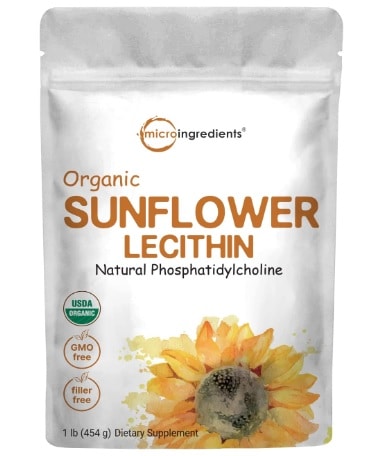
54. Sunflower lecithin is a natural emulsifier extracted from sunflower seeds. It is commonly used in the food industry as an ingredient in products like chocolate, baked goods, and dressings, helping to stabilize and enhance their texture.
55. Sunflower wax, derived from sunflower oil, has various applications. It is used in cosmetics, candles, and polishes as a natural and eco-friendly alternative to synthetic waxes.
56. Sunflower husks (that are removed from the seeds during processing to obtain the edible seeds or to extract oil).and stalks have been utilized for biofuel production. They can be converted into biomass pellets or used as a source of energy in biomass power plants, contributing to renewable energy initiatives.
Sunflower Symbolism
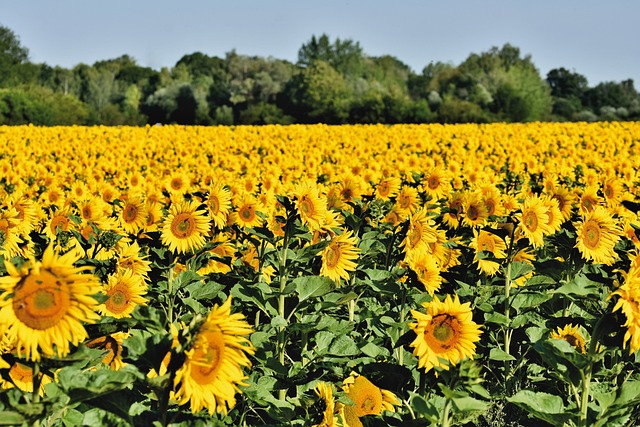
57. Sunflowers are widely recognized as symbols of positivity and happiness, representing the radiant energy of the sun. Their bright and vibrant yellow petals evoke feelings of joy and optimism.
58. The sunflower’s tall and upright stance is often associated with strength and resilience. It serves as a reminder to stay strong and face challenges with a positive attitude.
59. Sunflowers have been used as symbols of loyalty and adoration. Their ability to track the sun’s movement throughout the day has been interpreted as a symbol of unwavering devotion.
60. In many cultures, sunflowers are seen as a representation of fertility and abundance. Their ability to produce numerous seeds is often associated with prosperity and the fulfillment of dreams and aspirations.
61. Sunflowers are often used as symbols of friendship and camaraderie. Their warm and inviting nature makes them a popular gift to express appreciation and celebrate meaningful connections.
62. The sunflower’s association with the sun and its life-giving properties has led to its symbolism of vitality and rejuvenation. It signifies the power to overcome adversity and embrace new beginnings.
63. The sunflower’s large and open face, composed of numerous individual florets, symbolizes inclusivity and unity. It represents the beauty of diversity and the strength that comes from coming together.
64. Sunflowers are often linked to personal growth and the pursuit of happiness. They inspire individuals to follow their passions, seek personal fulfillment, and embrace a life filled with positivity and purpose.
65. The sunflower’s distinctive appearance, with its large and radiant bloom, and its ability to turn towards the sun, symbolizes the importance of seeking light and positivity in one’s life. Sunflowers serve as a reminder to stay connected to the things that bring happiness and to always strive for a brighter tomorrow.
Read related:
40 herbs you can grow in your garden
Learn more about flowers
Final Thoughts on Fun Sunflower Facts
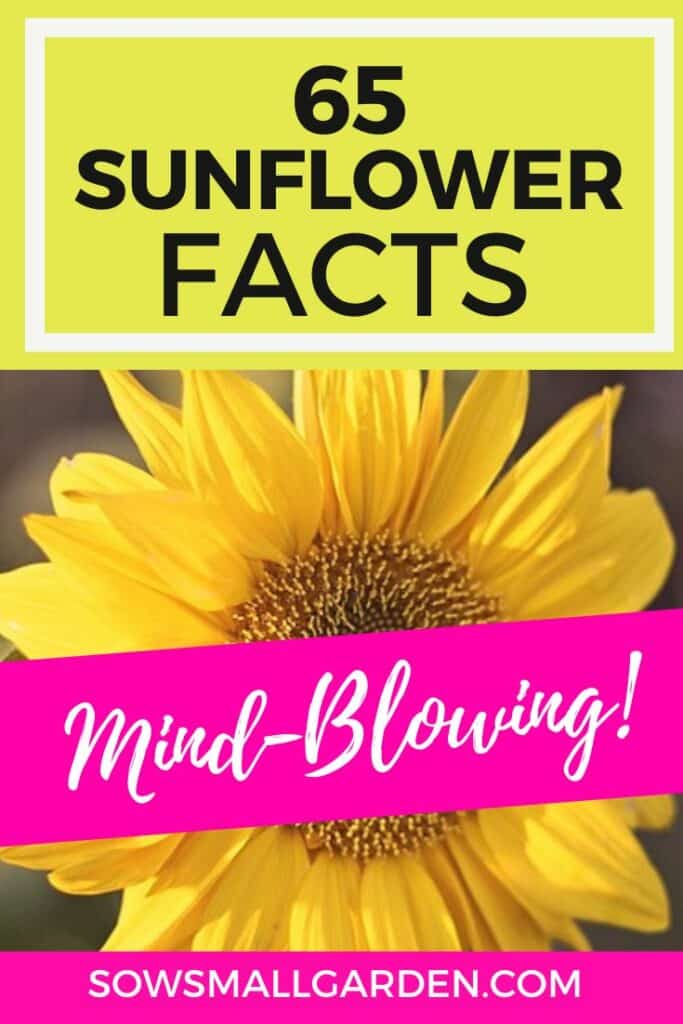
Pin it!
I hope this article expanded your knowledge and revealed some incredible facts about sunflowers. So, next time you see a sunflower, take a moment to enjoy its beauty and remember these fascinating sunflower facts hidden within its bright petals.
You have read:


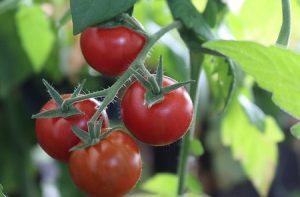
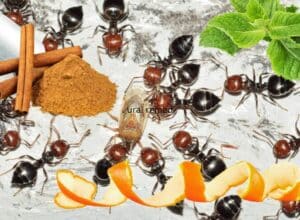
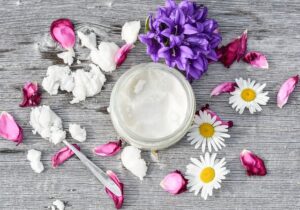
I am lost for words , this is the most amazing wonderful plant that our HEAVENLY FATHER have created. We have still so much to learn off nature.
Thank you so much for your heartfelt comment! I couldn’t agree more – the beauty and wonder of sunflowers truly remind us of the incredible creations in nature. There’s always something new to learn and appreciate. 🌻